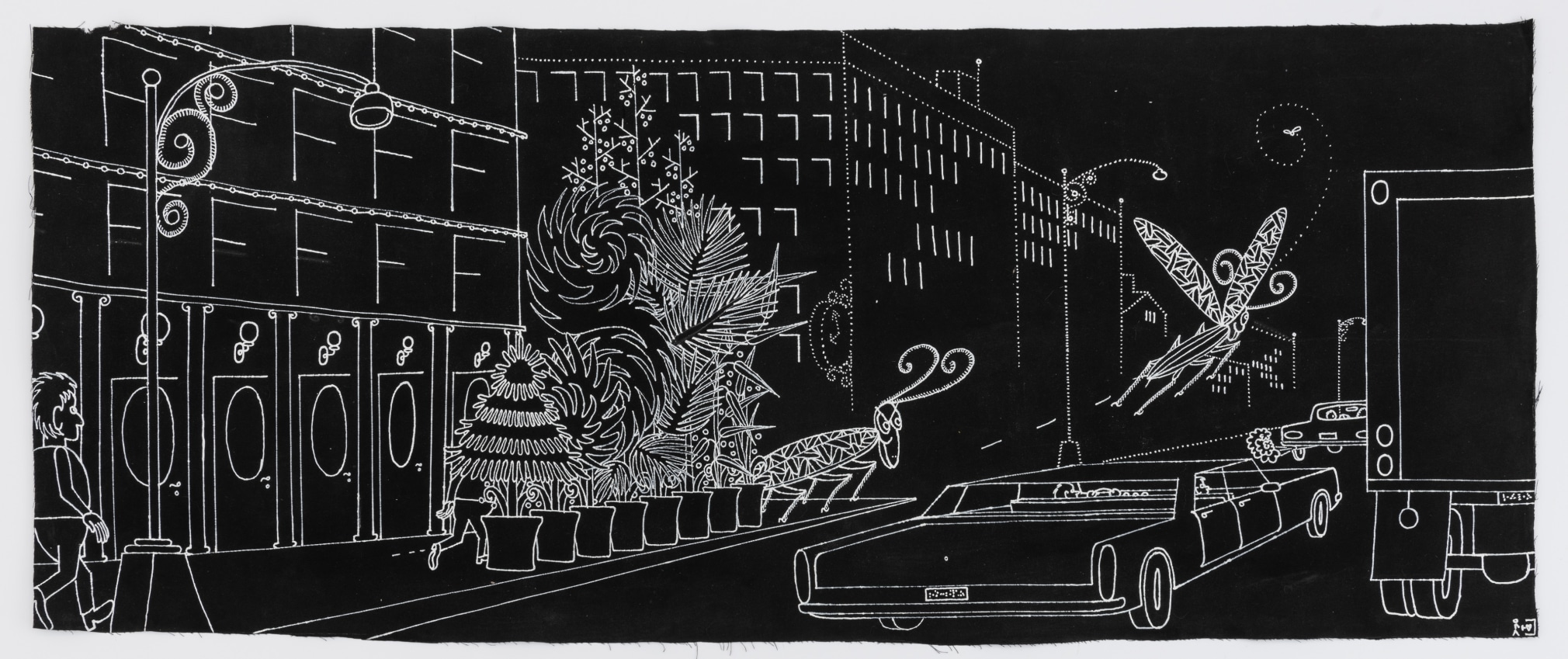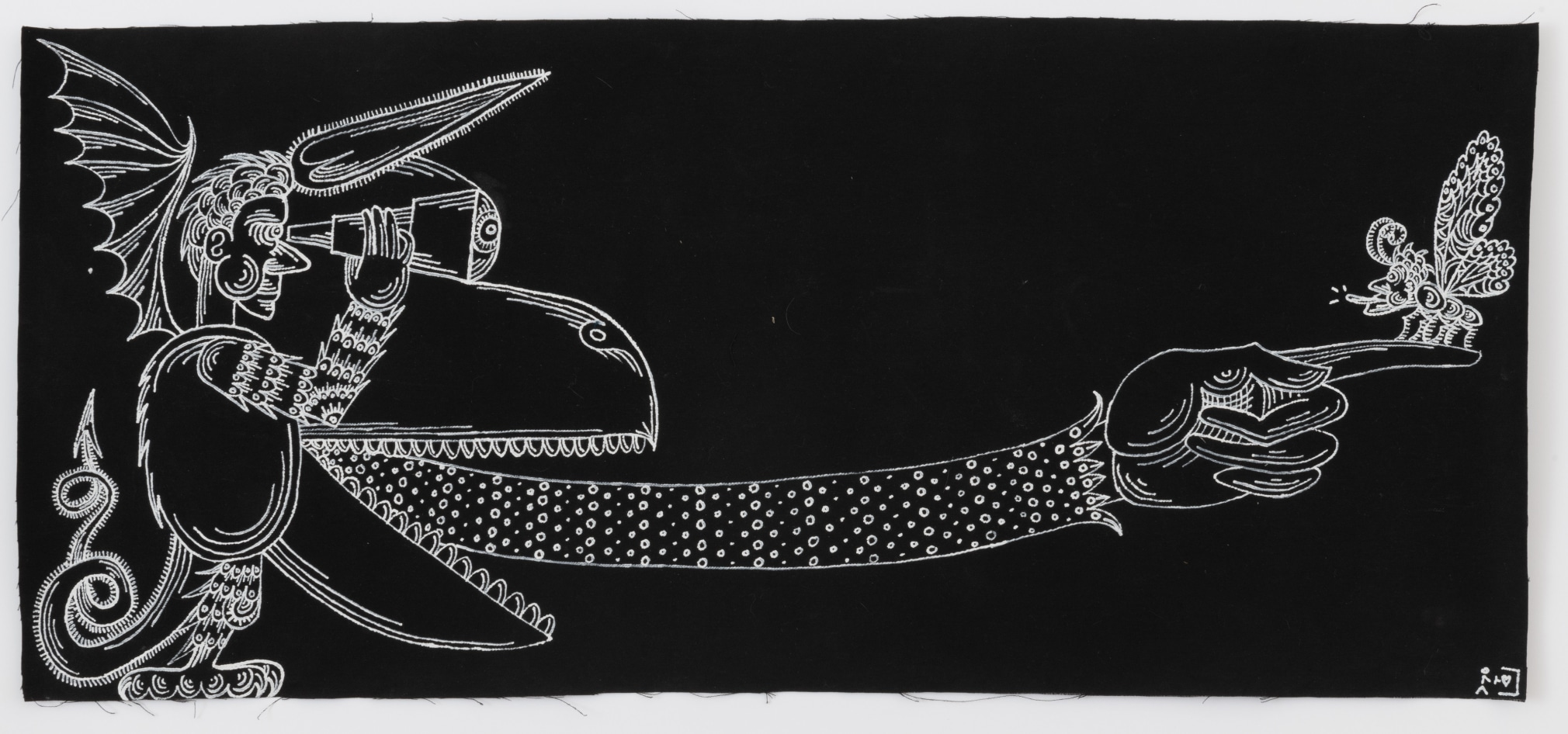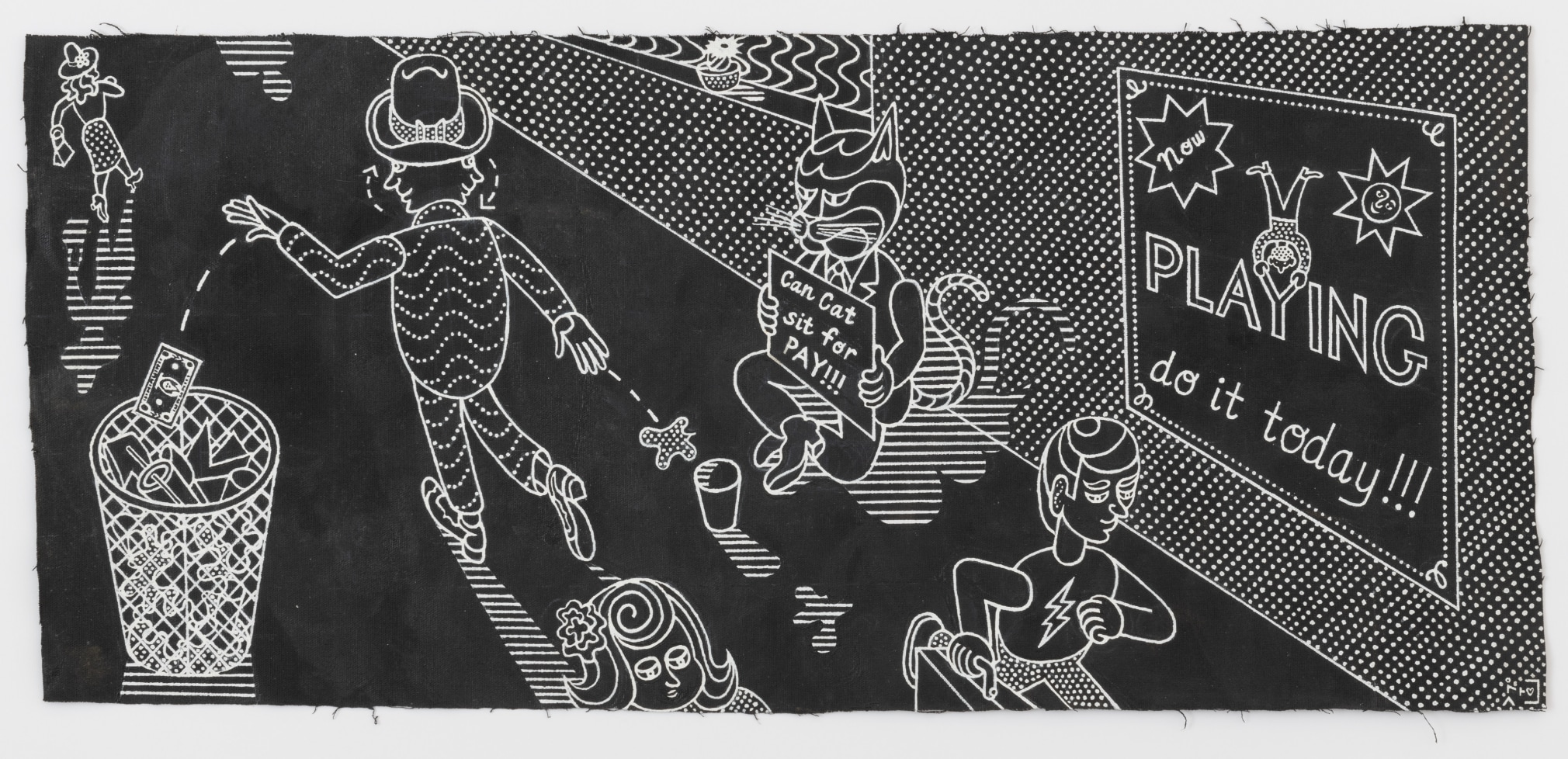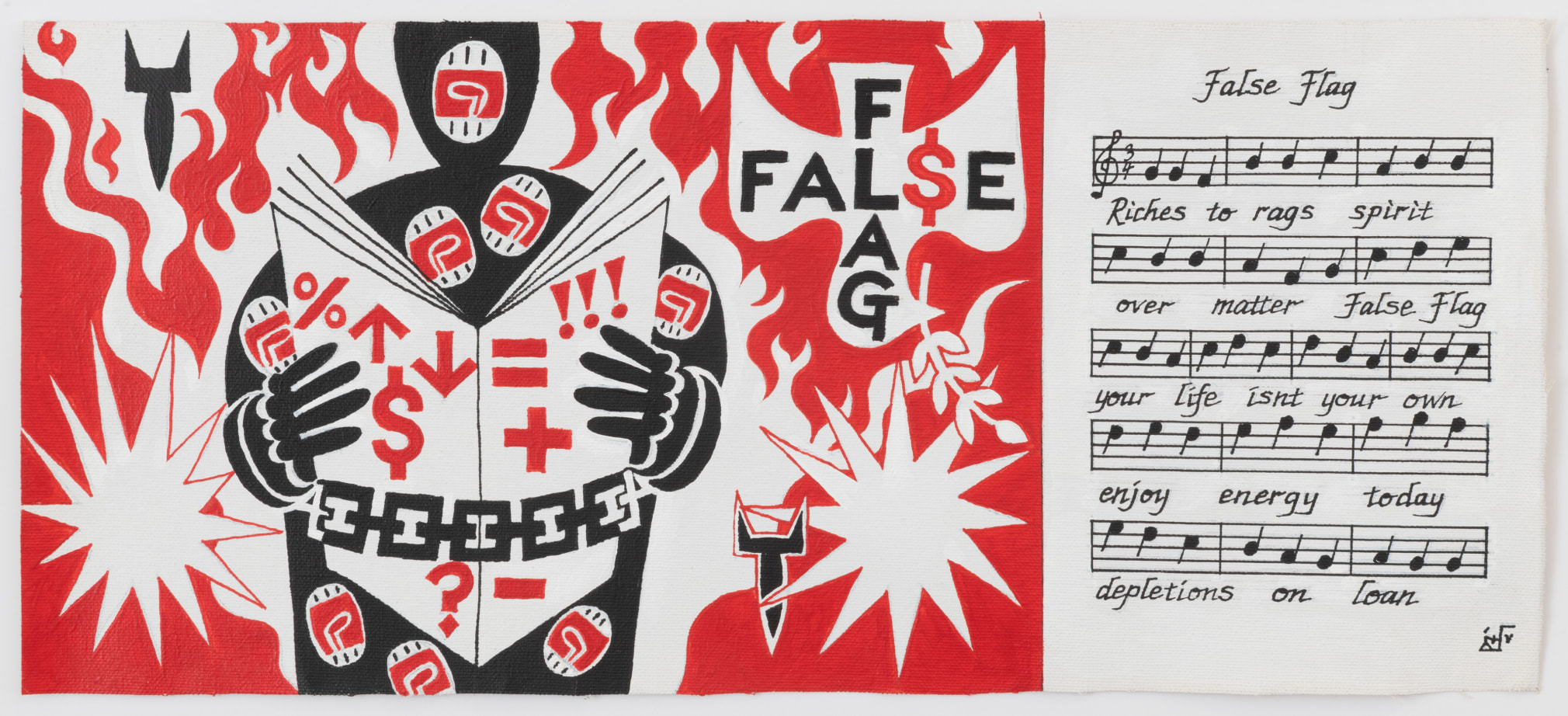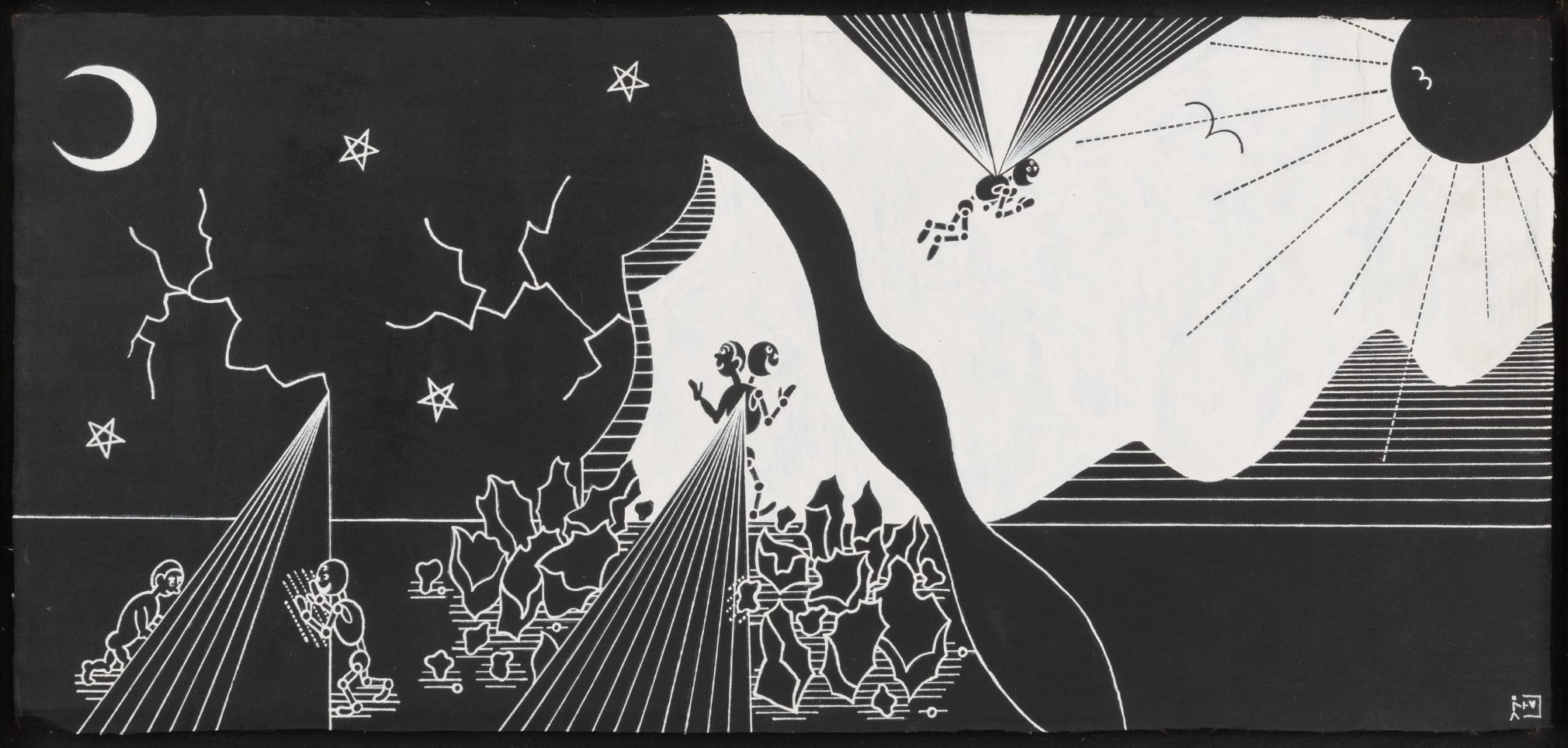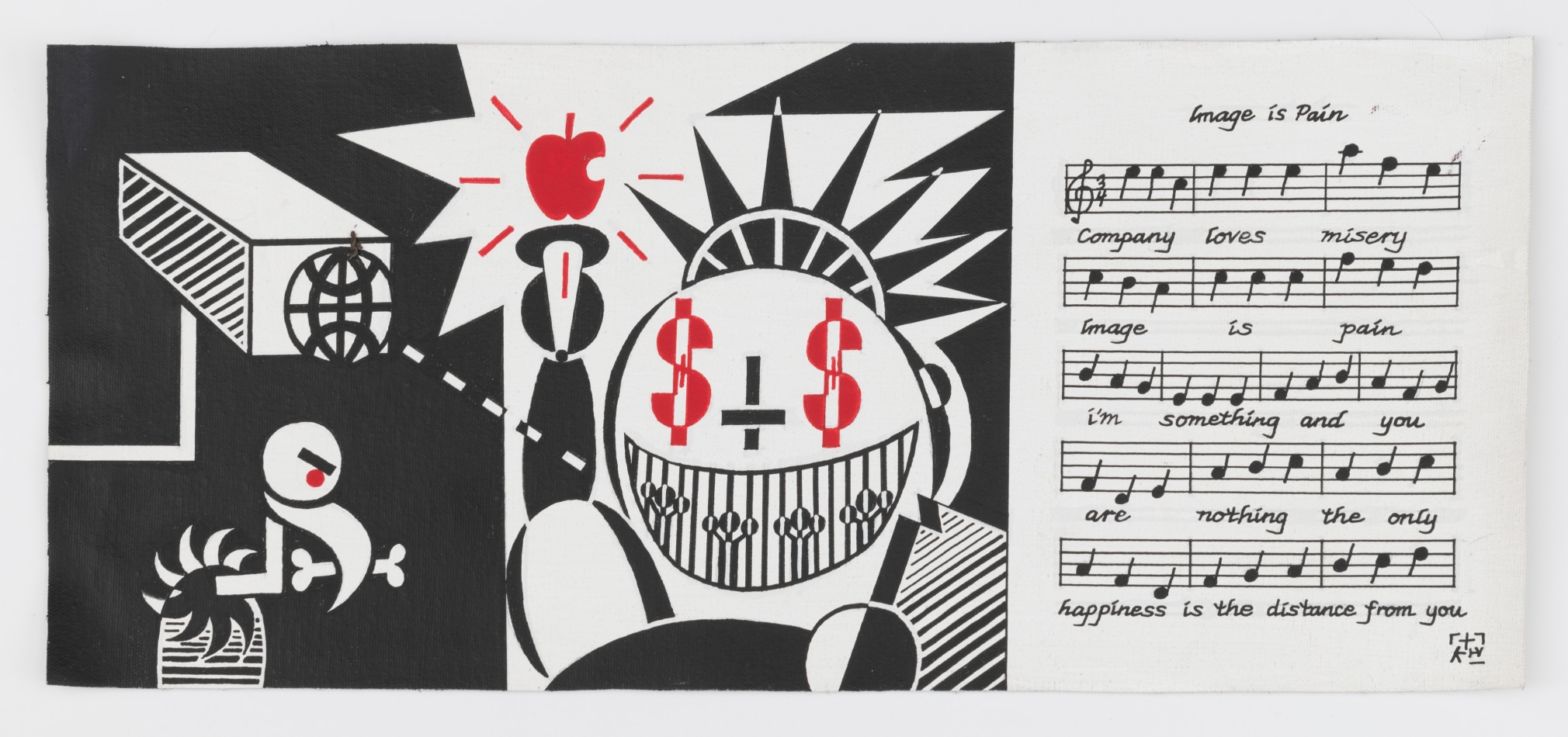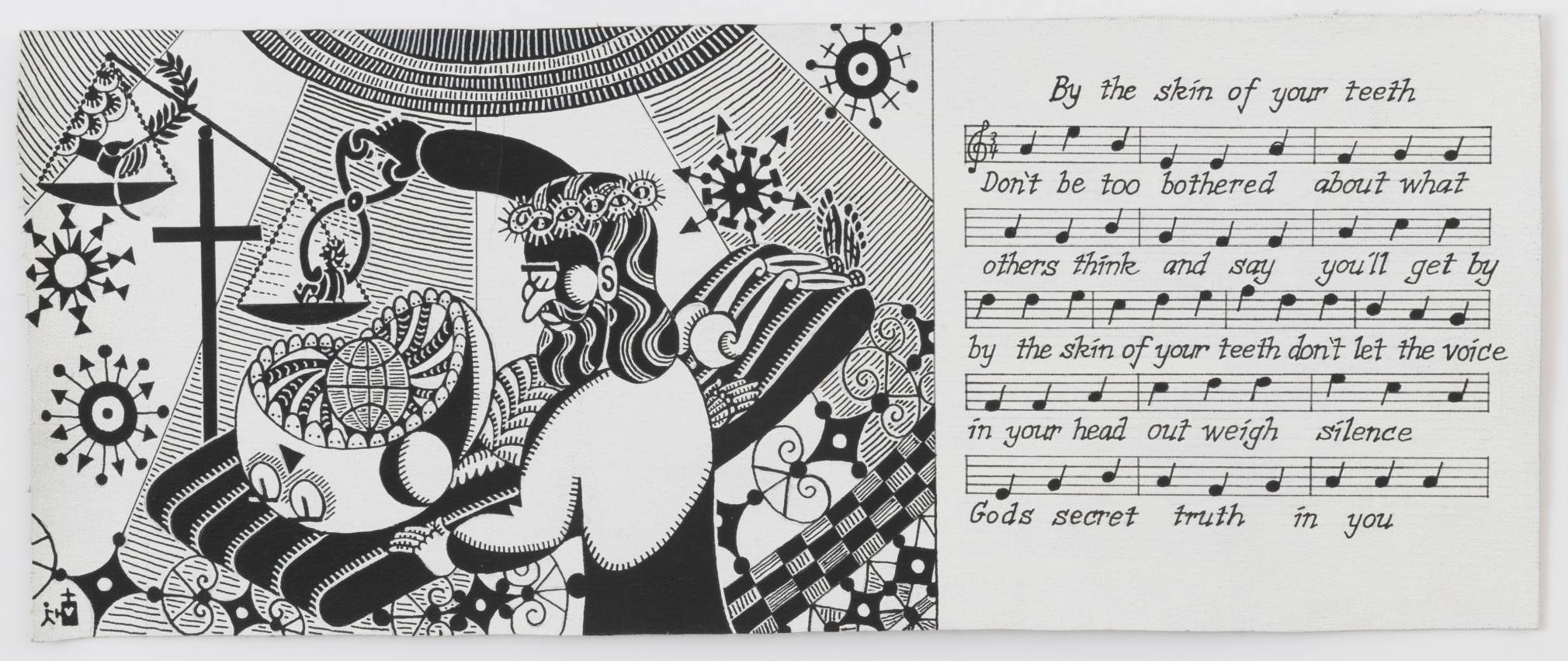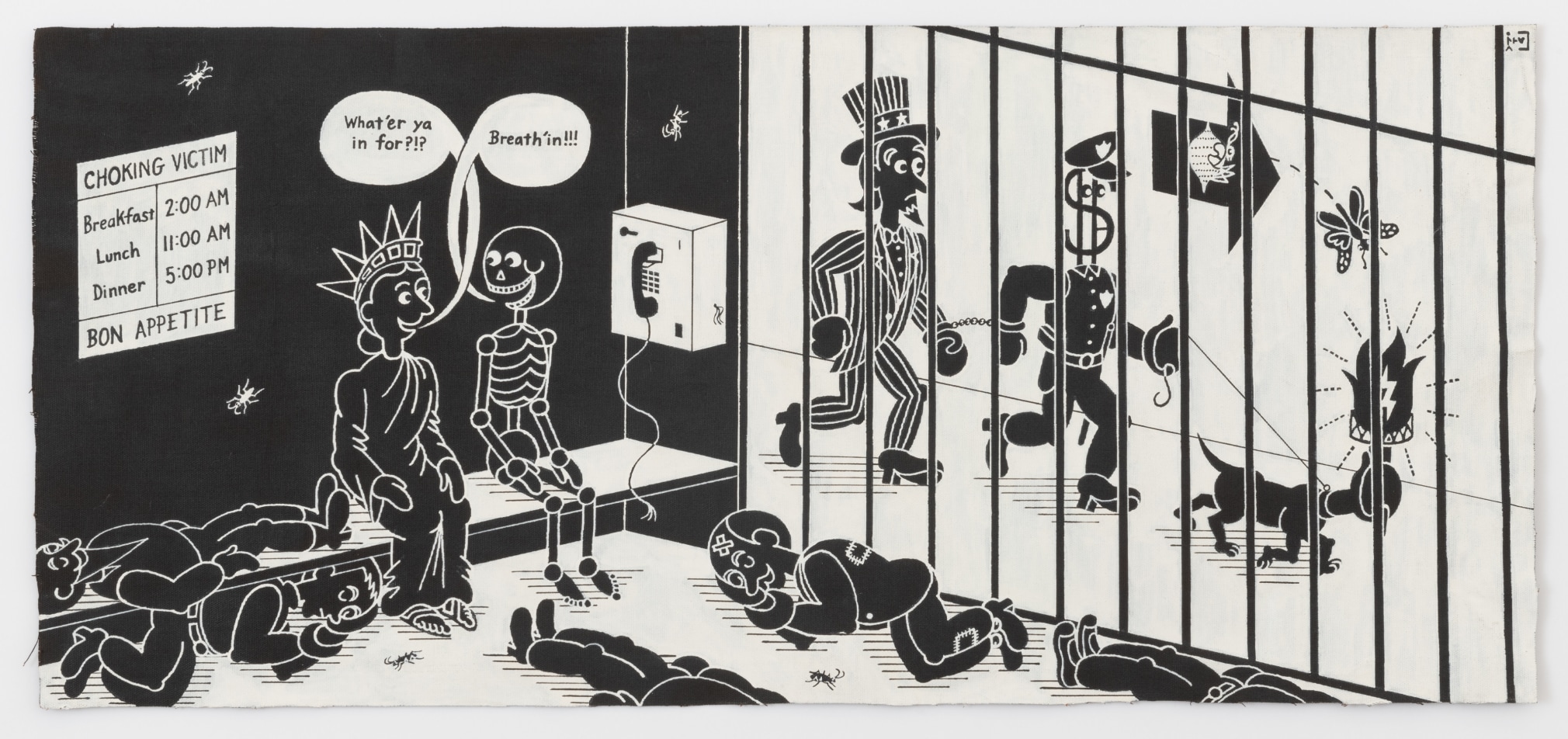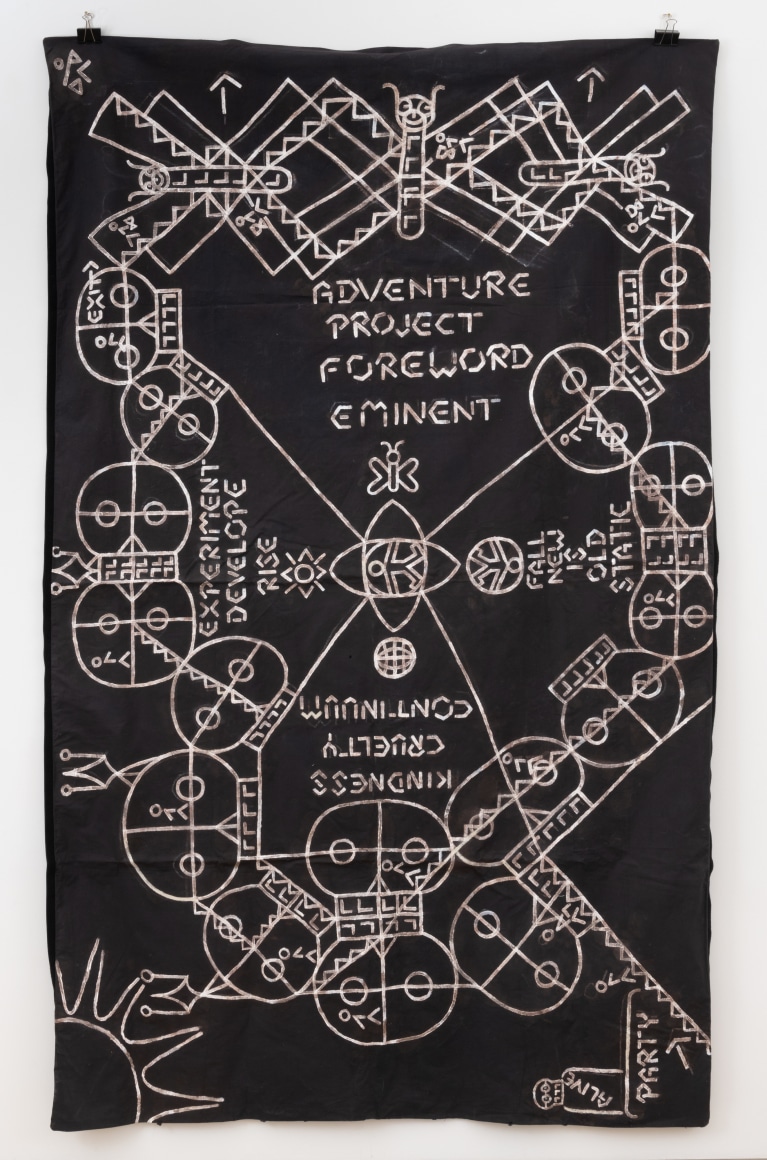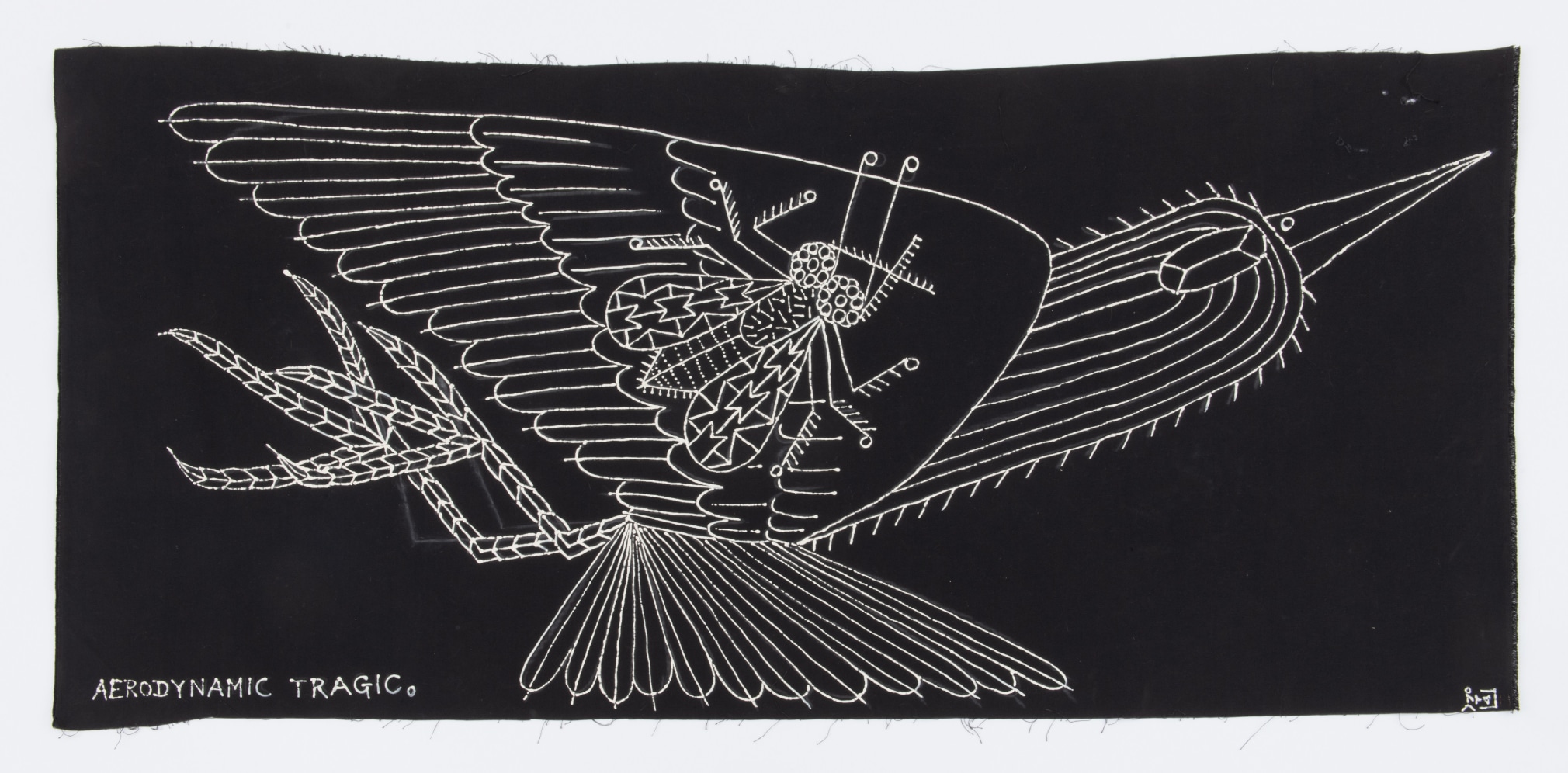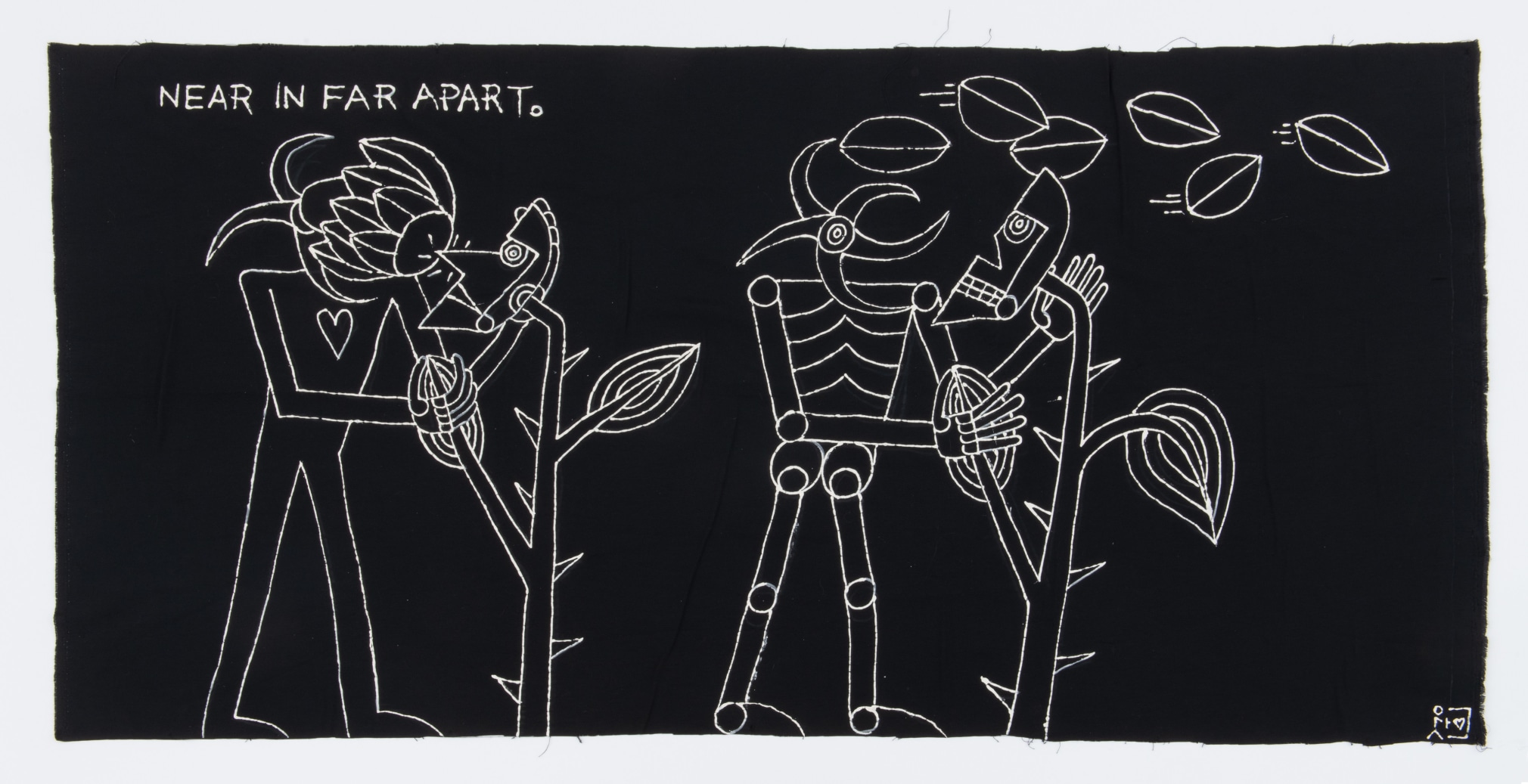Andrew Edlin Gallery is excited to present a solo exhibition of works by Anthony Dominguez (1960-2014), an artist who chose to live unhoused in New York City for more than twenty years. It will be the late artist’s first exhibition at the gallery.
Dominguez was the son of a successful commercial artist in Fort Worth, Texas. He immersed himself in art from an early age and later took university art courses, but never earned a degree. While in his twenties he moved to New York, where he found work at a sign company.
At the end of the 1980s, Dominguez abandoned his East Village apartment, tossed his possessions and art materials into a dumpster, and spent the rest of his life as a homeless wanderer. Spending most of his time in New York, he forsook any semblance of security, sheltering in tunnels, cardboard boxes, and other hideaways. To his way of thinking, he had set himself free.
Dominguez never stopped making art and left a substantial body of distinctive work, all made from scavenged materials. Early pieces include small, black-fabric discs whose uniquely stylized imagery is imprinted with custom-made stencils and bleach applied with hypodermic syringes. Dominguez intended these round patches to be sewn onto clothing, and covered his own jacket with them.
This jacket caught the attention of Aarne and Tina Anton, who became the first to exhibit Dominguez’s work—at Art on the Edge, Tina’s nonprofit studio for homeless artists, and later at Aarne’s gallery, American Primitive, both in Lower Manhattan. Dominguez was represented by Art on the Edge until it closed in 1996, after which American Primitive showed his work until the gallery closed in 2020.
Exposure to a receptive audience propelled Dominguez into a more ambitious mode. He started creating larger, rectangular-format paintings that didn’t rely on stenciled imagery, although they retained the stark, white-on-black palette. He also began to expand his thematic focus, centered on his philosophy of radical freedom.
Dominguez’s early paintings portray the actions of stylized humanoid figures and skeletons in abstracted, stage-like settings. Often appearing in these compact narratives are butterflies, traditional emblems of metamorphosis. The overarching theme is the cyclical interplay of life and death. The artist typically worked on loose canvas or other fabrics scavenged from the Garment District. He stacked and rolled the paintings for easy storage.
The exhibition title references one of his most elaborate works, an untitled painting on a five-by-nine-foot sheet of black fabric. Kindness Cruelty Continuum was painted in a tunnel where it functioned as a mural. Dominguez removed it from the premises shortly before the building directly overhead burned down. Reminiscent of a game board, it features an intricate structure of stripped-down, stylized imagery including stairways, skulls, butterflies, a world globe, and a dozen tiny, anonymous stick figures, some bearing celebratory goblets. An arrow in the upper right, marked ‘EXIT,’ indicates the game’s apparent endpoint, where a skull adjoins a butterfly wing and a figure carrying a knapsack on a stick—sign of the archetypal homeless wanderer—ascends into the unknown beyond.
For years Dominguez relied exclusively on the white/black formula—metaphorically resonant as well as convenient, since it only required one color. He used paint he found in trash bins and scoured the streets for his implements—plastic condiment dispensers, drafting tools, and pens or brushes he made from found materials. Continually refining his style and technique, Dominguez expanded the range of his imagery and treated his themes with increasing nuance and narrative invention.
Around 2006, Dominguez made a hundred-and-eighty-degree turn to painting in black on white canvas—a change that highlighted his work’s graphic punch. He subsequently switched the combination back and forth—white-on-black, black-on-white—depending on the materials at hand.
In 2011 Dominguez taught himself to read and write music and learned to make pennywhistle flutes by boring holes in pieces of plastic plumbing pipe. In an open-ended series he called Picture Songs, he began adding music and lyrics to his paintings. It was the first of three significant developments in his art as he passed his fiftieth birthday.
Second was a new addition to his palette—red, the color of blood and, by association, the heart.
Third was the emergence of overtly Christian iconography, imagery, and song lyrics. Crosses and stylized portraits of Jesus repeatedly appear in his late paintings—a development perhaps rooted in his Roman Catholic upbringing, but also reflecting his interest in early Christian mysticism.
In 2013 he returned to Fort Worth to see his beloved Aunt Celia, who was very ill and died before the year was out. He stayed into 2014 to take care of family business, then headed back to New York, stopping about twenty-five miles short of the city. In a thinly populated part of New Jersey, his body was found in a wooded area, where he’d evidently hanged himself from a railroad trestle. Significantly, it was Holy Saturday, commemorating the interval between Jesus’s Crucifixion and the Resurrection.
During his lifetime Anthony Dominguez’s work was shown in New York at American Primitive Gallery, Cavin-Morris, Clayton Gallery, and the Jamaica Center for Arts and Learning; in Philadelphia at Janet Fleisher Gallery; in Baltimore at the American Visionary Art Museum; in Charleston, South Carolina, at the Halsey Institute of Contemporary Art, College of Charleston; and in the Czech Republic at the Galerie U Recickych, Prague. His work will be included in the forthcoming exhibition Frances Tosquelles: Avant-Garde Psychiatry and the Birth of Art Brut opening in April, 2024 at the American Folk Art Museum, New York.

